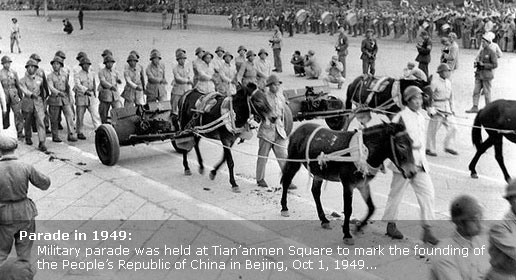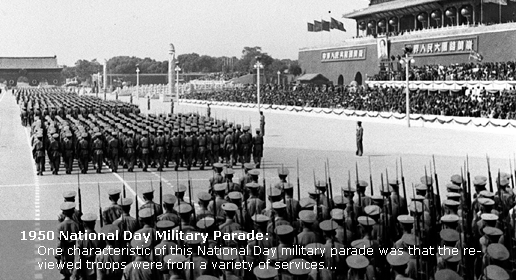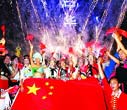60 People, 60 Stories
Close synergy
By Joey Kwok (China Daily)
Updated: 2009-09-30 08:14
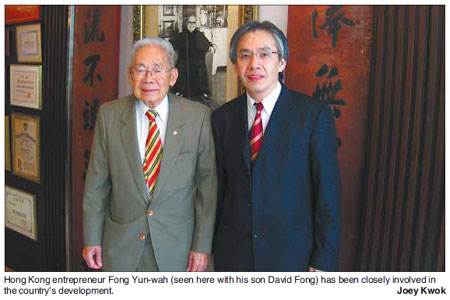
| ||||
As a witness to the economic cooperation between the mainland and Hong Kong over the past six decades, Fong, 83, believes there is one crucial factor for businesses such as his own to succeed - confidence in the development of the country.
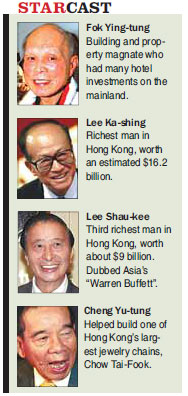
"New China faced quite a difficult time in the first 30 years of its establishment," Fong says.
"Yet, I would say the first three decades created a firm foundation for future development."
Now a philanthropist as well, Fong says he is glad to have witnessed the formative years of the country as a Hong Kong resident and celebrate its 60th anniversary together with the motherland.
The Hong Kong Special Administrative Region (SAR) has come a long way in growing in tandem with the Chinese mainland.
After the War of Resistance Against Japanese Aggression ended in 1945, the population in Hong Kong jumped to 2.36 million in 1950, from 650,000.
Seeing opportunities in the city's population explosion, Hip Shing Hong started to transform into a local property developer.
It became one of the leading property developers in the city in the 1960s.
Fong, together with tycoon Fok Ying-tung and 66 other local property developers, subsequently established the Real Estate Developers Association of Hong Kong in 1965.
Fong's company has since been involved in the country's development.
"Our company started building schools and hospitals on the mainland in the 1960s, as well as donating money to youths living in poverty," Fong says.
"As a Chinese, I wish for my motherland to be prosperous and strong."
The SAR's future continues to be similarly tied to the mainland's.
Hong Kong's economy entered a new era when the country witnessed rapid change following reform and opening up in the late 1970s.
As the Chinese mainland gradually progressed in international trade and investment, its economic integration with Hong Kong also accelerated.
"The socialist economic system on the mainland was being merged with the capitalist one in Hong Kong," Fong says.
"At that time, the local industrial and commercial sector thought the policy was innovative but also challenging."
Any worries over policies were eased after the central government's liaison office in Hong Kong invited local tycoons to visit Beijing and Guangzhou, in the early 1980s, Fong says.
"Central government officials had guaranteed our investment on the mainland would be secure and profitable," he says.
To that effect, he says Fok Ying-tung's investment in the 1980s in the White Swan Hotel in Guangzhou, touted as the first five-star hotel on the mainland, had given significant encouragement to Hong Kong enterprises to invest in the mainland.
"When people saw that Fok had earned quite a lot from his hotel investment, Chinese entrepreneurs from Hong Kong, Taiwan, Southeast Asia, the US and Europe were also interested in participating the mainland's economic development," Fong says.
"In the last 30 years, the industrial and commercial industry in Hong Kong, as well as overseas Chinese enterprises, has contributed a lot to expanding the country's foreign reserves," he said.
Hong Kong, as an international city with a century of experience in external trade, has been a "very good platform for the mainland to step into the world", Fong says.
"In the early reform period, the mainland did not have any land auctions or stock exchanges," he says.
Fong hopes enterprises in the Hong Kong and Macao SAR can continue to gain confidence and commitment to the country's development.
"We can build a prosperous and harmonious country, with strong confidence between the mainland and the SARs strong," Fong says.
Time line
1949-1950s
Many Hong Kong businesses are engaged in re-export from the Chinese mainland to other countries. The textile industry is one of the most prominent industries in the city. Hong Kong's population also experiences rapid growth in the 1950s because of the influx of refugees and entrepreneurs from the mainland.
1960s-1977
Overseas exports become a key economic driver for Hong Kong, accounting for 64 percent of the city's GDP in the 1970s. Hong Kong's industry also begins to diversify into clothing, electronics, plastics and other labor-intensive manufacturing.
1978-1980s
Economic cooperation and integration between the Chinese mainland and Hong Kong intensifies after the central government announces the Open Door Policy in 1978. Encouraged by the central government's policy, Hong Kong enterprises start their first investments on the mainland. Financial services, including real estate, banking and insurance, begin to take the lead in the city's economic growth.
1990-1996
Hong Kong businesses start to move their labor-intensive activities and factories back to the mainland, while the city's economy gradually transforms to commerce and services from manufacturing.
1997-present
Businesses and financial services become the two most important growth engines for Hong Kong's economy, after the handover in 1997. Backed by the prosperous economy of the Chinese mainland, Hong Kong sustains its economic growth despite the Asian financial crisis in 1998, the SARS epidemic in 2003 and the global financial turmoil in 2008.






